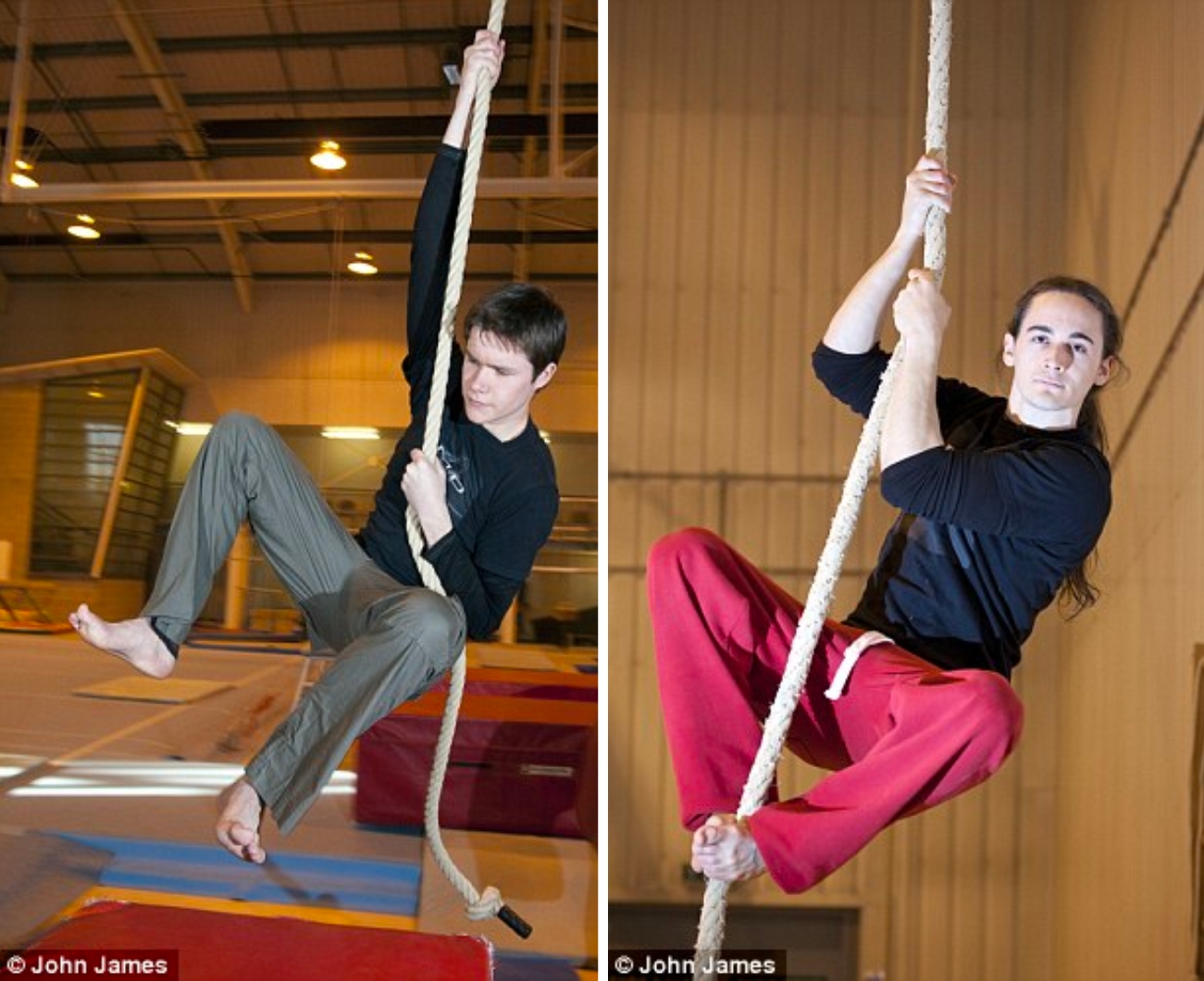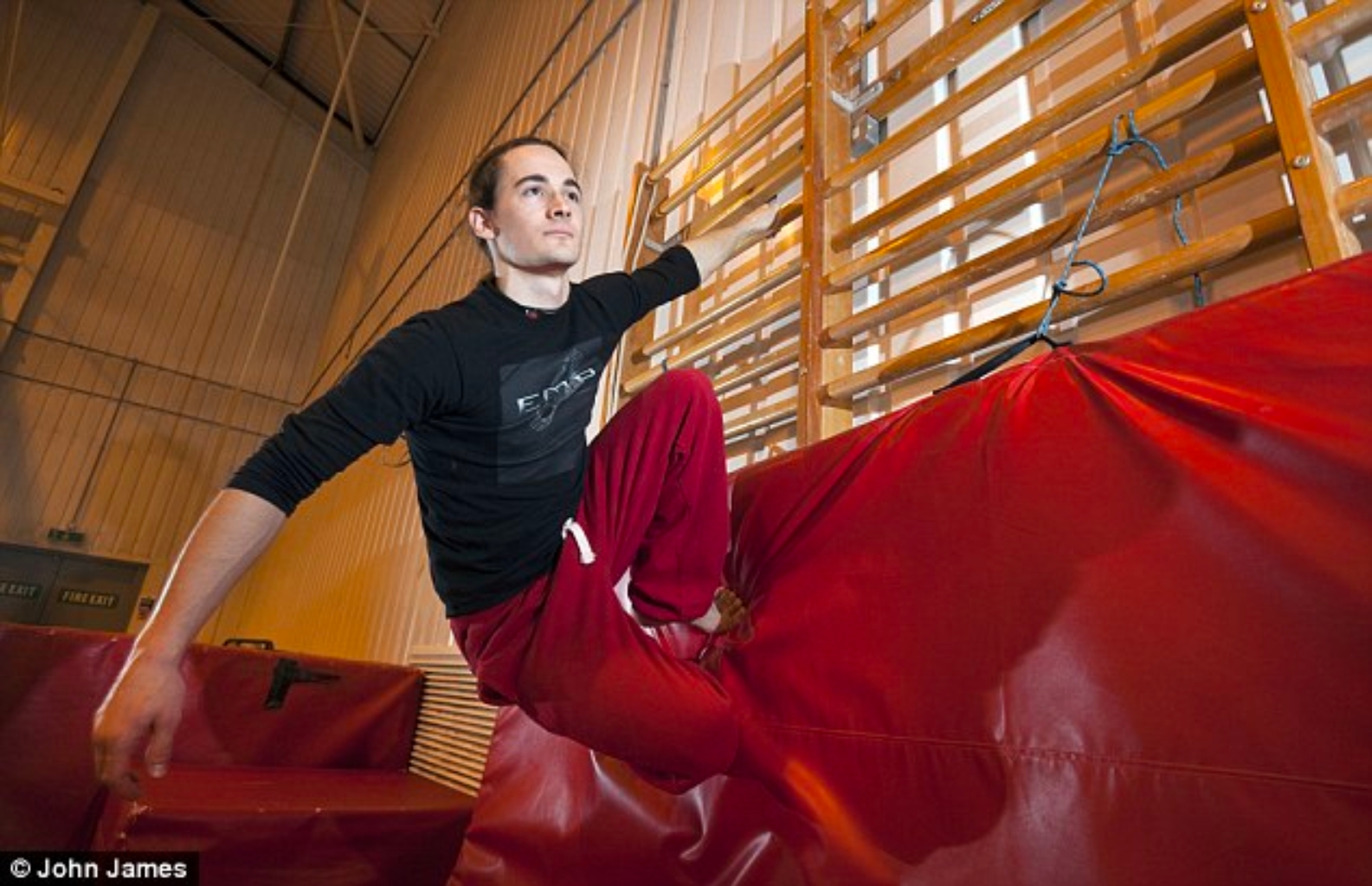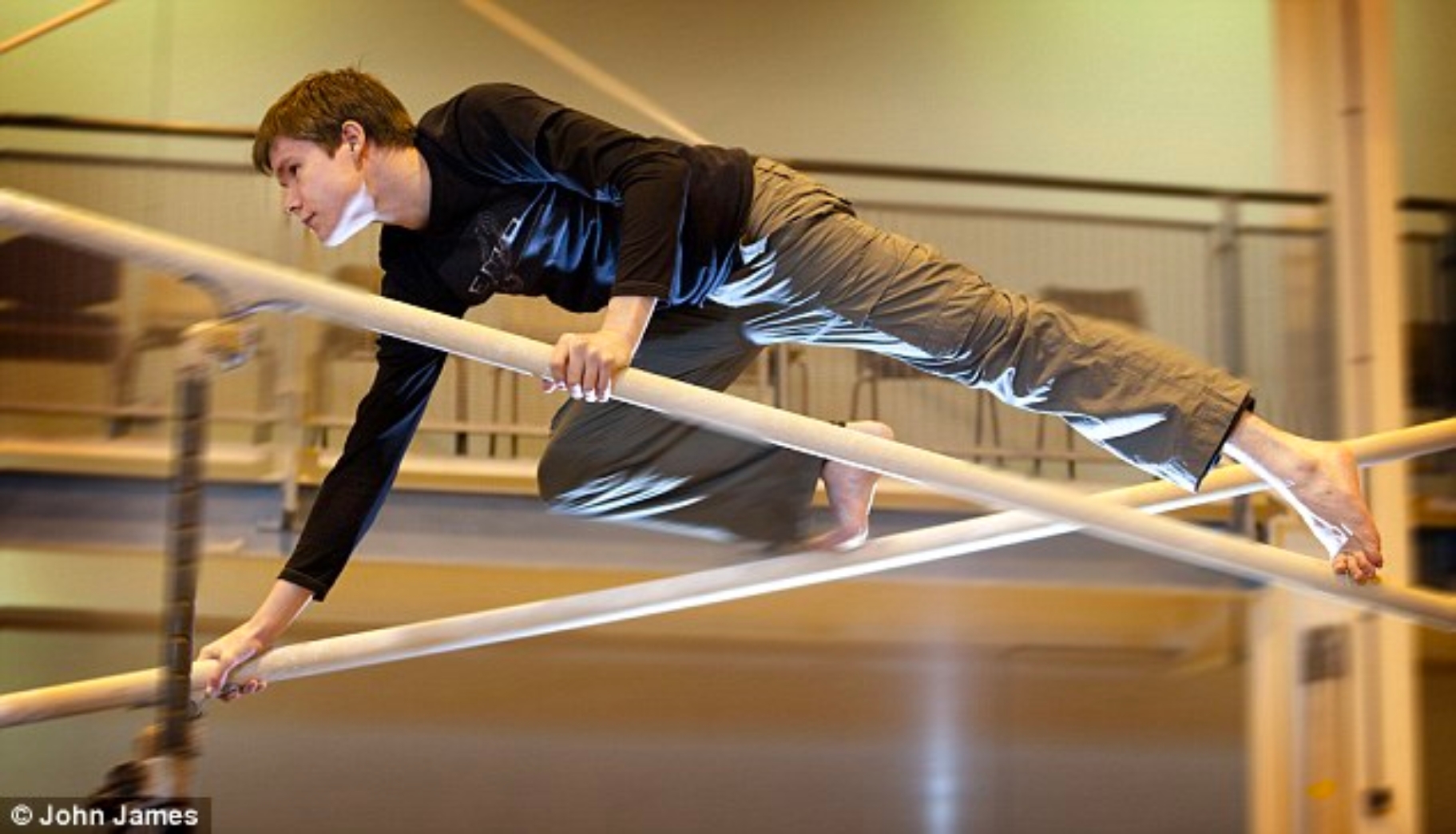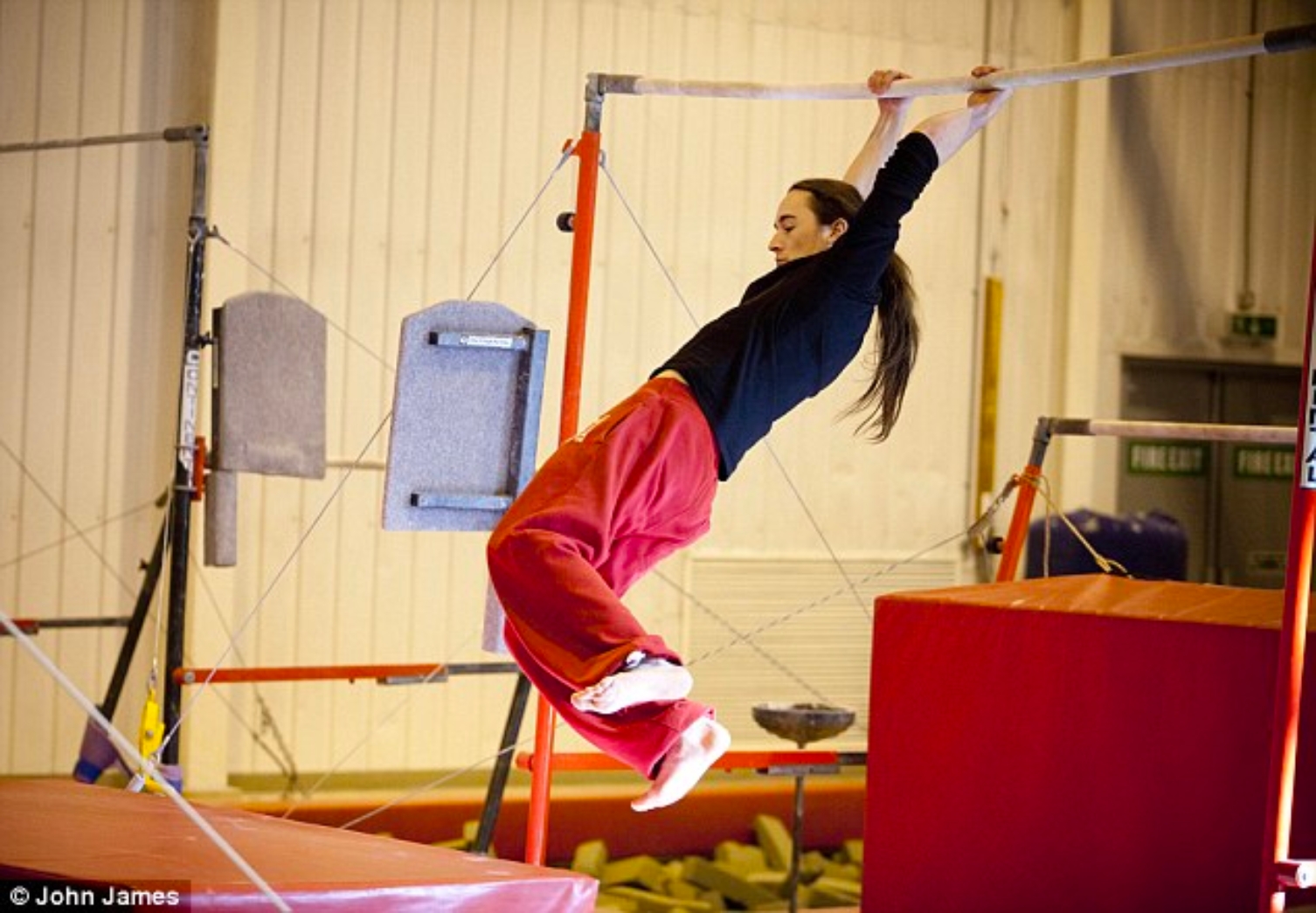Tarzan famously liked to swing through the jungle on a vine.
But when there is no vine to grab, scientists have tried to work out how a busy ape gets around the forest most efficiently.
The choices apes make to get around the jungle have been a riddle perplexing scientists for years.
Now researchers have used parkour athletes to help solve the dilemma by measuring how much energy they use when swinging around an obstacle course.
Scroll down for video

Unlike human food, apes’ diets of leaves and small fruit are not very calorific.
So the choices they make must conserve energy.
And it turns out the easiest choice is to use trees in a similar fashion to how a pole-vaulter flexes forward on a pole.
It was suspected that this ingenious ‘tree swaying’ behaviour, commonly used by orangutans, uses far less energy than jumping across a gap, or climbing down to the ground below only to climb back up again.
But it was very difficult to prove.
As orangutans are unlikely to co-operate and wear a gadget during their forest journeys, researchers carried out their study on humans instead.
Parkour athletes, or so called ‘free runners’, jump around the urban jungle from ledge to ledge like apes.
Unlike an ape, however, a human can happily jump around with a mask that measures how much oxygen they breathe in as they vault around.
An ape, on the other hand, would likely rip it off immediately.
To test how much energy is used in different scenarios, the scientists created upright fibreglass poles which the freerunners could bend as though they were trees, as well as ropes and ladders to climb up and down.
Video: Circus athletes demonstrate the movement of orangutans

Using the breathing apparatus, the scientists were able to calculate how much energy was used, as measured by the amount of oxygen inhaled and exhaled.
The authors, writing in Current Biology, said: ‘We devised a novel, custom-made experimental set-up to record the energy expenditure of parkour athletes tree-swaying, jumping and vertical climbing.’
Lewis Halsey of the University of Roehampton in London explained that a mask that measures how much oxygen breathed in is needed to measure the energy used by the apes.
‘We can’t measure these apes directly for obvious reasons,’ he said.


‘First of all we have to find them, then we’d have to train them, and even then they’d probably rip the oxygen mask off and rip it to shreds.’
But he said that humans aren’t a bad fit for modelling ape movements.
We have many features that make us good tree climbers, including opposable thumbs and good upper body strength.
‘We’ve still got adaptations for climbing trees, but we’re not as good as apes.’
Video: Athlete climbs up a rope to mirror orangutan movements

Calculations found that ‘tree swaying’ used far less energy than other methods.
Climbing down a rope used 36.6 kilojoules (8 calories) compared to between 0.26 to 3.76kj (0.06 to 0.9 calories), depending on the stiffness of the tree.
Jumping used 0.7 kj (0.1 calorie).
While the amount of calories burnt may seem small, over the course of a day travelling around the treetops, it would soon add up.
As for swinging from vine to vine like Tarzan, Halsey said vine swinging was not used much in apes.
‘It’s not a mainstream way of getting around forests.
‘One of the issues for apes is they don’t want to fall down – they don’t want to grab hold of something that snaps.

Video: Watch parkour athletes pretend to be ORANGUTANS in bizarre experiment to see how apes move through trees
Standing in for an orangutan, a parkour athlete sways and jumps from a model tree. Researchers measured his energy expenditure during this and other activities to gain insights into why orangutans spend so much time…
‘Most of the time they have more than one limb attached to something, whether it is one of their hands or their feet, which are very flexible.’
In a separate research paper, Halsey found that the parkour athletes who most resembled apes – with strong upper bodies, long arms and short legs, adapted better to repeated circuits of the simulated jungle environment.
The team found the long armed people began to use less energy to get around the simulated jungle after several attempts.
Share or comment on this article: Parkour athletes pretend to be ORANGUTANS in University of Roehampton experiment.





